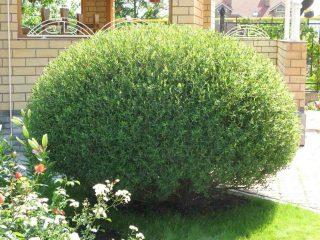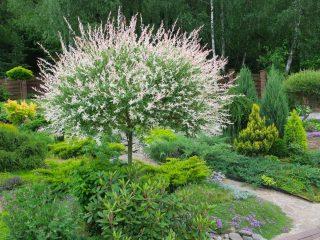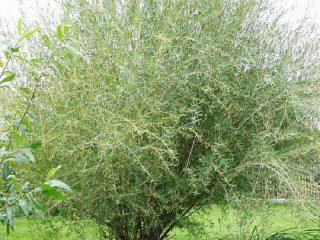Content
Willow Bulata is another variety bred by modern breeders. He is one of the most attractive and unpretentious. For Russian gardeners, the plant is also notable for another thing - its good winter hardiness. The crop is grown for decorative purposes: in gardens, parks, squares. It fits easily into any landscape.
Origin
There is no detailed information about selection. It is known that Bulat willow was developed by domestic scientists. Since then it has become widespread, especially in the eastern part of the country.
Description of willow Bulat
Brittle willow Bullata is a medium-sized member of the family. It grows up to 15 m in height, with a crown diameter of 10 m. The branches have a spreading arrangement, which is why Bulat willow often resembles a ball.

At a young age, the trunk can bifurcate, which has a good effect on decorativeness - the willow crown becomes larger and more interesting
Unlike the weeping willow, this variety has a different direction of branches. They grow towards the sun, stretching out like flowers.From a distance, the crown may resemble velor - this is possible due to the large number of leaves and branches, which give it texture.
But large branches look more like spokes, especially when you look at them from below. In autumn, the foliage falls, but this does not affect the decorative appearance of the Bulat willow. Thanks to the close arrangement of shoots, the tree retains its noble appearance. The crown remains spherical even in winter.
Light green leaf plates are coated with gloss, which increases UV resistance. The width of the foliage reaches 1 cm, length - 8 cm. It almost does not turn yellow - it remains green.
Bulat spherical willow is a brittle variety. Old branches fall off, opening space for new ones to grow. This is how the tree renews itself. At the beginning of spring, black buds open, and towards the end of the season, flowers appear - golden earrings with a large number of stamens. Their scent attracts insects and birds.
Advantages and disadvantages
Designers highly appreciate the decorative properties of this variety. Bulat willow is used in landscaping parks, recreation areas, coastal strips, and rocky areas.

Iva Bulata gets sick very rarely
Pros:
- winter hardiness;
- resistance to heat;
- good growth;
- shiny leaves.
Minuses:
- low life expectancy;
- fragility.
Planting willow Bulat
The Willow family is unpretentious in itself, so there are no difficulties when planting the plant. The seedlings are adapted to life in any area, but for optimal growth, the Bulat willow is placed in a sunny meadow or in a partial shade garden.
Particular attention is paid to the soil - it must be moist. It is reasonable to plant Bulat willow near a pond so that there is no need to water the plant.The tree can survive a small drought, but in hot climates with a lot of salt and dense soil it simply will not survive.
One should not exclude the peculiarity of this variety – the fragility of the plant. Bulat willow on a trunk can be broken by a gust of strong wind. The same applies to snow, so in winter it is advisable to brush away the snowdrifts from the branches.
Caring for Bulat willow
The photo shows how beautiful Iva Bulata can be. Such results cannot be achieved without careful care. The young tree is tied up so that the plant does not fall in windy weather.
While the Bulat willow is not yet strong, the soil is loosened after each moistening. At the same time, the area is weeded to remove weeds. In summer, watering is done regularly, especially in July, when the sun haunts many crops.

It must be remembered that Bulat willow consumes a lot of liquid
Once a season, the soil is saturated with peat and complex nutritional supplements. By mid-autumn, young seedlings are insulated with straw. To prevent it from flying away, it is tied to the trunk with a thread. It is better not to use wire, as it freezes.
Decorative pruning of the plant is carried out in the first ten days of April. First, the broken branches are removed, and then they begin to form. The haircut can be done again in the summer.
Reproduction
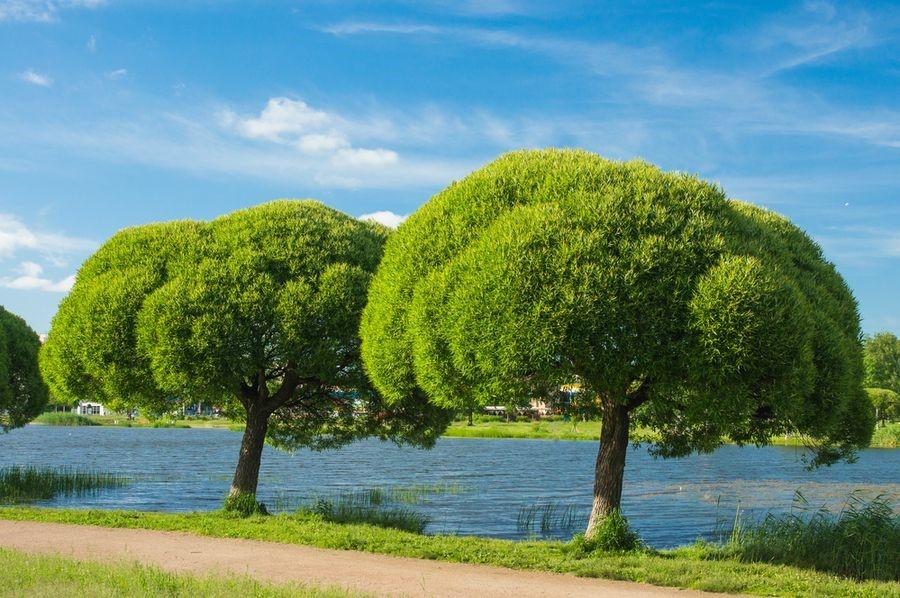
To propagate plantings, cuttings are used
This process can take place naturally: Bulat willow is fragile, its branches fall off on their own. Some specimens take root, some do not. When conditions are suitable for growth, true thickets may appear.
To avoid this, the area is cleared of branches. Some samples can be used for artificial propagation.They are immediately planted in a pot (it’s good if it is fertilized with peat). When the roots appear, the Bulat willow is transferred to a permanent place.
The variety grows very quickly. At the age of three, he is twice the height of a man. If a transplant is necessary, it is better not to delay this. The older the plant, the more difficult it is for it to adapt to new conditions.
Diseases and pests
Willow Bulat is almost not susceptible to diseases and pest attacks. All members of the family have “built-in” immunity. Unfortunately, even these can become targets for fungi and insects. At the first sign of weakness, you should immediately inspect the tree.
Infected branches and leaves are removed, covering the cut area with garden varnish. To reduce the risk of disease, spray with fungicides once a season. Broad-spectrum insecticides will help control pests. They are diluted with water, after which the lower part of the tree is sprayed.
Willow Bulata in landscape design
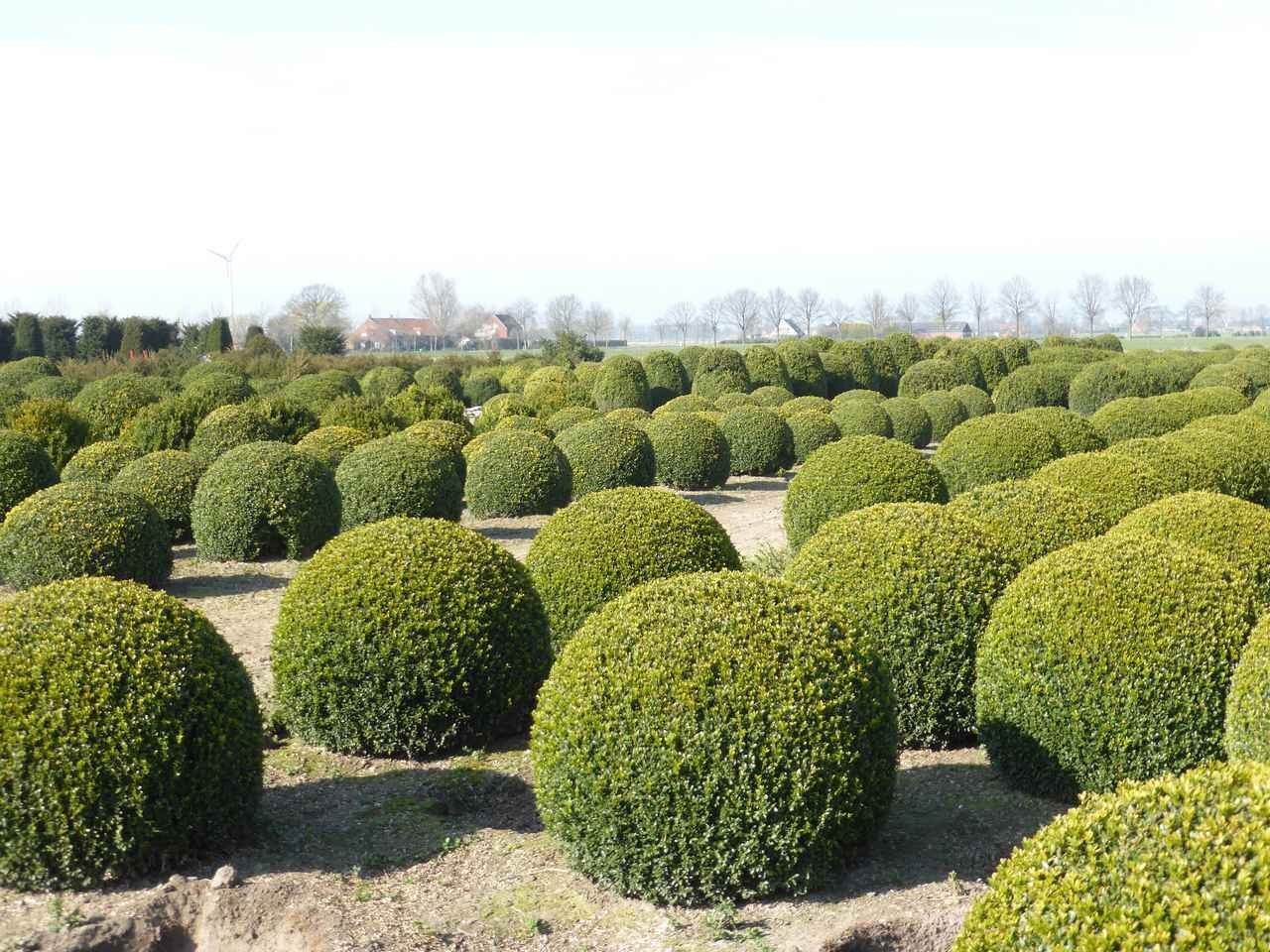
Using the decorative properties of the crown, you can create a variety of compositions
With the help of Bulat willow, hedges are built.
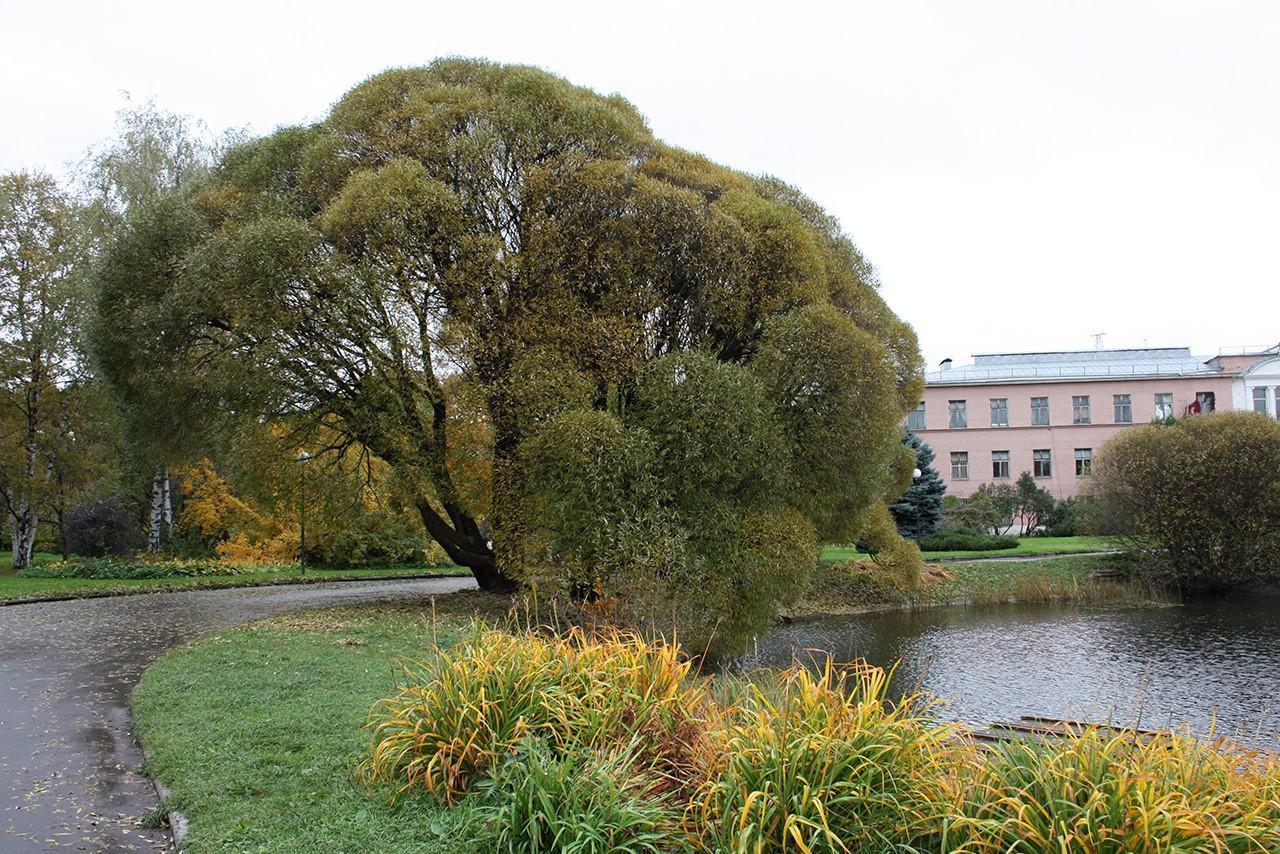
The culture looks great in a group with other garden plants, including trees
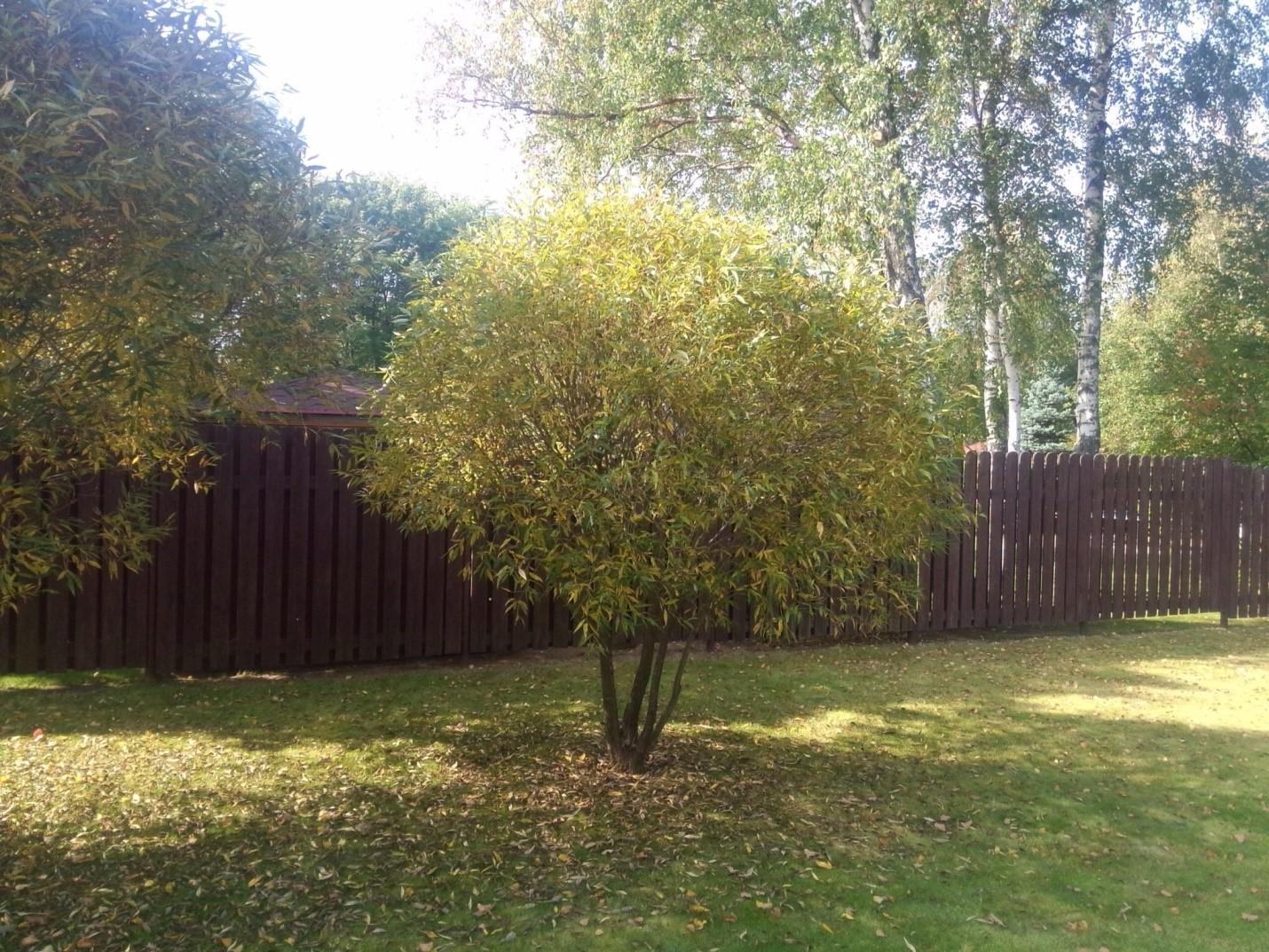
Many place seedlings separately, for example, to cover a large area with greenery
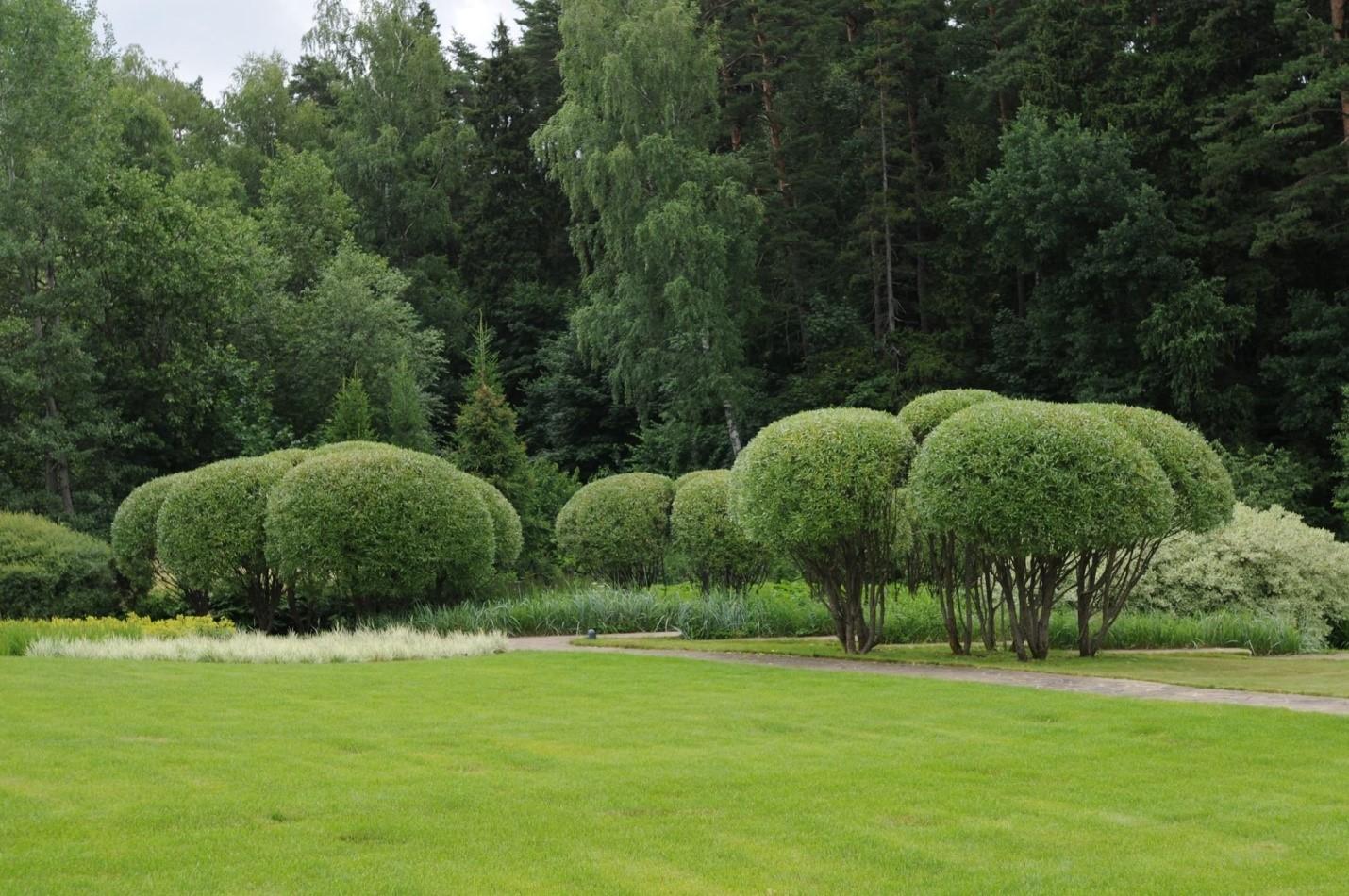
The crown can have not only a spherical shape, it all depends on the tool and skills of the gardener
Conclusion
Willow Bulata is widespread in Russia and abroad. This is explained by the high decorative value of the plant. It is easy to plant, but difficulties in care arise only due to regular haircuts.Other advantages include winter hardiness and resistance to short-term drought.
Reviews about willow Bulat
